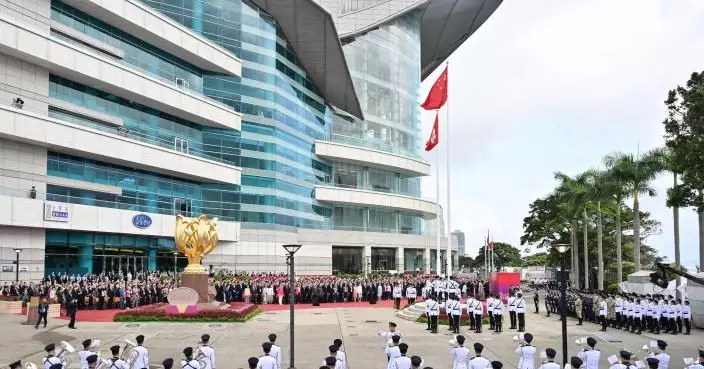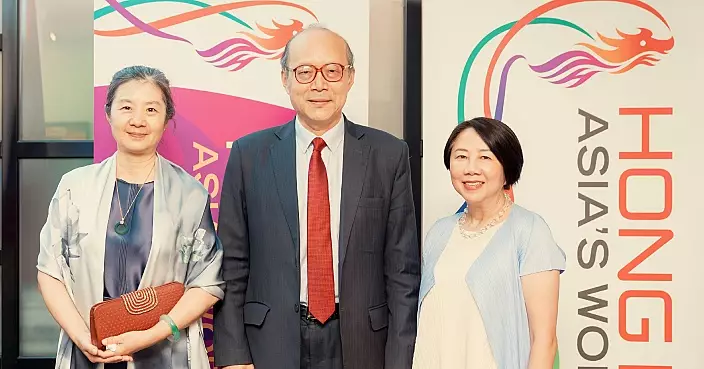Jointly launched by the Labour & Welfare Bureau and the Elderly Commission in 2007, the Elder Academy Scheme currently offers 10,000 learning places annually to individuals aged 60 or above.
Peter Lo, who is 72, joined the scheme to study photography after retiring eight years ago. He later became a volunteer and now assists new intakes of students with their own photography.
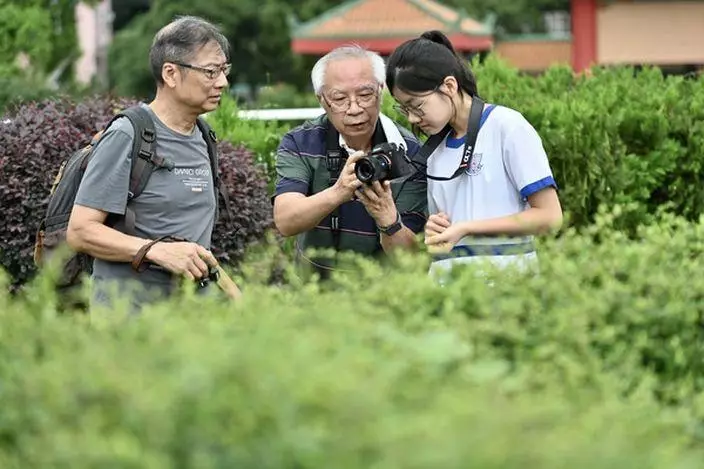
Imparting knowledge: Peter Lo (centre) joined the scheme after retiring eight years ago, and later became a photography instructor under it.
“The staff of the Academy were pleased with the photos I took, leading them to ask if I could start a class to teach students,” he recalled, adding that he gladly accepted the opportunity to become an instructor in 2019.
Uplifting experiences
In Peter’s lessons, held in a secondary school classroom, the Elder Academy cohort is joined by a group of young secondary students.
Besides learning theory, the group is given the chance to put that knowledge into practice, with the garden on the roof the school building serving as an ideal location.
For Peter, observing how the two sets of students interact and encourage one another is uplifting. “This experience highlights that we are not useless in old age; we can continue to grow and contribute.”
Besides photography, the scheme offers a wide range of other learning opportunities.
Judy Lee, who joined the scheme in 2009, has taken a variety of courses. Besides learning Chinese painting, she is also a tai chi fan class instructor, heading a team of volunteers who teach the practice.
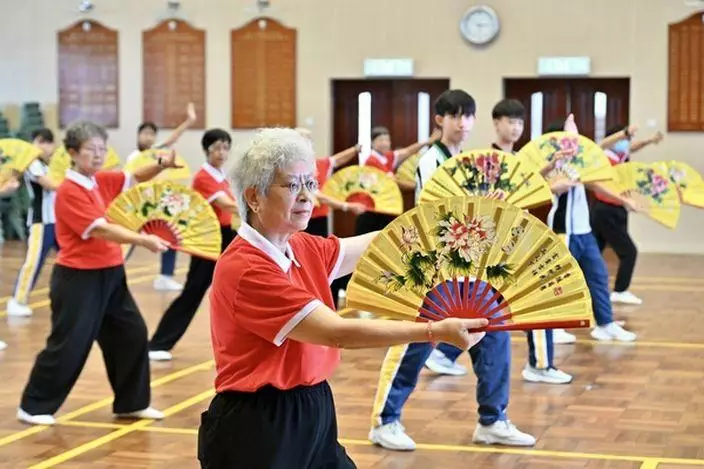
Life-long learning: Judy Lee is not only an Elder Academy student, but also a tai chi fan class instructor, heading a team of volunteers who teach the practice.
“I am skilled in tai chi and also as a tai chi instructor,” she said. “Therefore, I organise a volunteer team with other tai chi athletes. Since my specialty is playing paper fans, I teach them how to play it.
“Subsequently, we visit institutions, schools, and elderly care centres. Our aim is to organise activities and exchange views with youngsters to foster inter-generational harmony.”
Life-long learning
Presently, there are approximately 200 Elder Academies operating in primary, secondary, and post-secondary institutions across the city.
The scheme allows elderly citizens to learn new skills in a school setting, with a focus on active ageing. It also encourages them to integrate into the community and build a sense of accomplishment through life-long learning.
Convener of the New Territories West Elder Academy Cluster Chan How-chi explained that building inter-generational harmony is one of the scheme’s objectives.
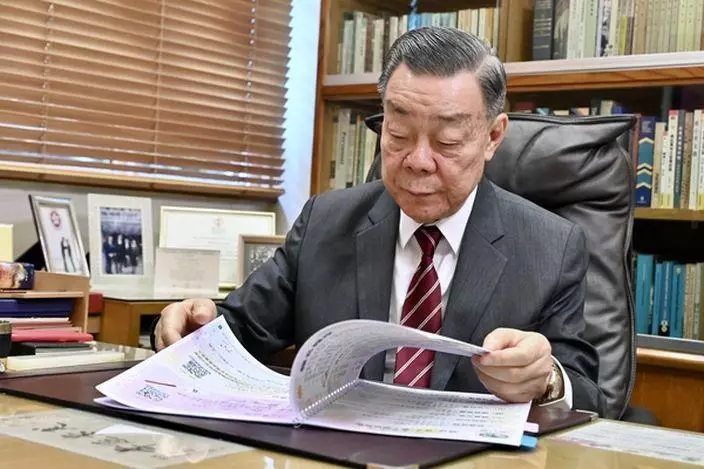
Fostering harmony: Convener of the New Territories West Elder Academy Cluster Chan How-chi explained that building inter-generational harmony is one of the scheme’s objectives.
“Young students can act as tutors, and the elders can share their life experiences with them, fostering interactive and inclusive activities.
“The elders have discovered that they can learn new interests and skills that they may not encounter in their daily lives. Likewise, the young students realise that building relationships with the elderly is not as challenging as they might have thought.”
Growth plan
To ensure the sustained development of the Elder Academy Scheme, the 2023 Policy Address proposed an allocation of $80 million to it, with half of the amount to be injected in the current fiscal year.
This $40 million injection aims to increase the number of learning places to 15,000, encouraging more elderly people to discover the benefits of active ageing.






